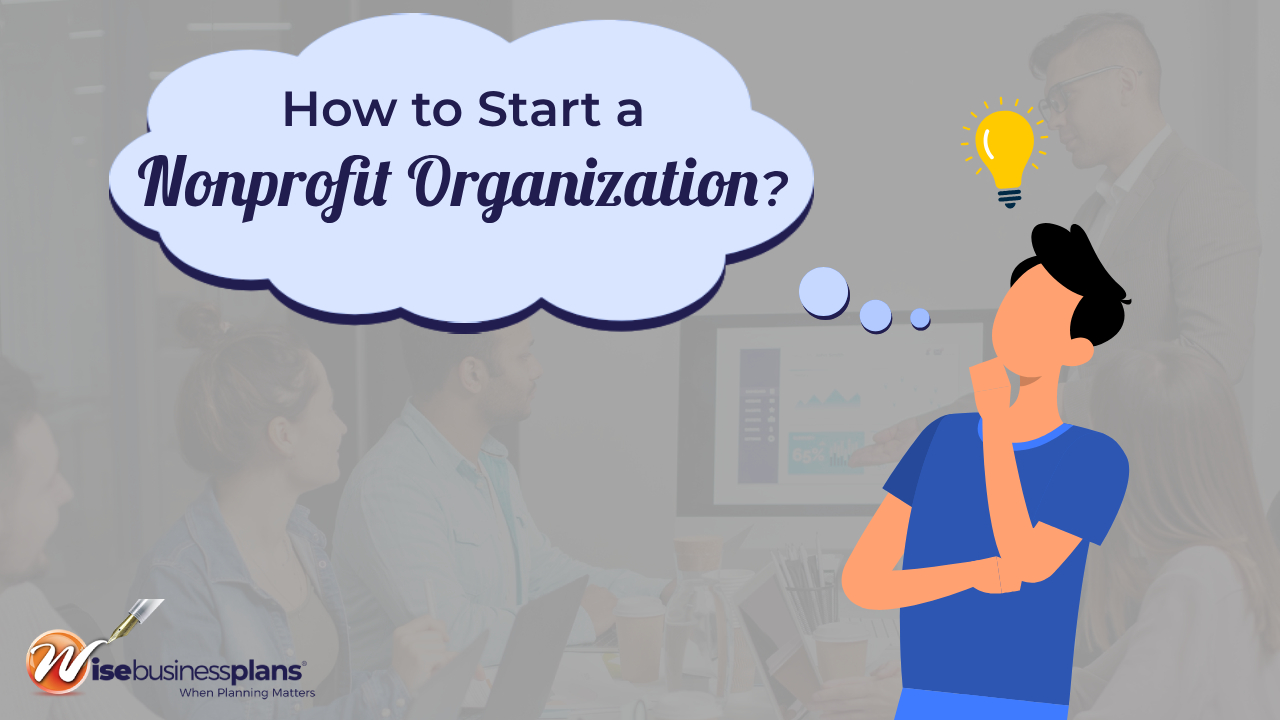How to Start a Nonprofit Organization: A Step-by-Step Guide
Table of Contents
- What is a Nonprofit Organization?
- How to start non-profit organization step by step
- Step 1: Define Your Mission and Vision
- Step 2: Conduct a Needs Assessment
- Step 3: Develop a Business Plan
- Step 4: Choose a Legal Structure
- Step 5: Register Your Nonprofit
- Step 6: Form a Board of Directors
- Step 7: Create Bylaws
- Step 8: Obtain Necessary Licenses and Permits
- Step 9: Register for Tax-Exempt Status
- Step 10: Develop a Fundraising Strategy
- Free: Business Plan Examples
- Step 11: Build Partnerships
- Step 12: Launch Your Programs
- Step 13: Comply with Reporting and Compliance Requirements
- Step 14: Evaluate and Adapt
- Conclusion
- FAQs:
Starting a nonprofit organization is a noble pursuit that enables you to effect positive change in your community or support a cause close to your heart. Whether your passion lies in addressing social issues, promoting education, fostering the arts, or tackling environmental challenges, establishing a nonprofit can be a powerful means to bring about transformation.
As a business plan writer and consultant, I have helped thousands of nonprofits launch and grow. In this guide, I share my insights that lead you through the steps required to initiate a nonprofit organization and help you comprehend the key factors involved in the process.
Want to write a business plan?
Get help from our business plan professionals now!
What is a Nonprofit Organization?
A nonprofit organization, frequently referred to as a 501(c)(3) organization in the United States, is a legally recognized entity designed to serve a public or charitable purpose. Nonprofits are exempt from federal income tax because they reinvest their earnings into their mission rather than distributing profits to shareholders or owners.
Their existence revolves around providing services or resources that benefit the public or specific communities.
How to start non-profit organization step by step
-
Step 1: Define Your Mission and Vision
-
Step 2: Conduct a Needs Assessment
Research and pinpoint the needs within your community or the area you intend to serve. Gain an understanding of the problems, challenges, and gaps that your nonprofit can address. This assessment will aid you in refining your mission and tailoring your programs to be effective and pertinent.
-
Step 3: Develop a Business Plan
Much like any for-profit enterprise, your nonprofit requires a comprehensive business plan. This plan delineates your organization’s objectives, strategies, budget, and timeline. It also serves as a roadmap for growth and sustainability. Your business plan should encompass:
- A clear mission statement.
- Detailed information about your programs and services.
- Your target audience or beneficiaries.
- Financial projections, encompassing income and expenses.
- Fundraising strategies.
- A marketing and outreach plan.
Want to write a business plan?
Get help from our business plan writers now!
-
Step 4: Choose a Legal Structure
Select the legal structure that best aligns with your nonprofit’s goals. Common options encompass:
- 501(c)(3) Nonprofit Corporation: This structure provides tax-exempt status and is the most prevalent choice for charitable organizations.
- 501(c)(4) Social Welfare Organization: These organizations concentrate on advocacy and lobbying for social change.
- 501(c)(6) Business League: Typically utilized for trade associations and professional organizations.
It is advisable to consult an attorney or a legal expert to assist you in determining the most appropriate structure for your nonprofit.
-
Step 5: Register Your Nonprofit
- Choose a Name: Select a unique and descriptive name for your organization that reflects your mission.
- File Articles of Incorporation: This legal document formally establishes your nonprofit. Specific requirements vary by location, so consult your state’s Secretary of State office for guidance.
- Apply for an Employer Identification Number (EIN): This is akin to a social security number for your nonprofit and is essential for tax purposes.
-
Step 6: Form a Board of Directors
Your board of directors will play a pivotal role in steering your nonprofit. Choose individuals who are passionate about your mission and bring diverse skills and experiences to the table. Your board should also assist with fundraising, governance, and strategic planning.
-
Step 7: Create Bylaws
Bylaws are the rules and procedures governing your organization’s internal operations. They should address how the board of directors is selected, how meetings are conducted, and other essential administrative matters.
-
Step 8: Obtain Necessary Licenses and Permits
Check with your state and local government to ensure you have all the requisite licenses and permits to operate legally. Depending on your activities, you may need additional permits.
-
Step 9: Register for Tax-Exempt Status
To attain recognition as a tax-exempt 501(c)(3) organization by the IRS, you must complete Form 1023 or Form 1023-EZ. This process can be intricate and time-consuming, so it is advisable to seek legal or accounting assistance.
-
Step 10: Develop a Fundraising Strategy
Nonprofits rely on funding to sustain their operations and fulfill their mission. Explore diverse fundraising methods, such as grants, donations, events, and online campaigns. Diversifying your revenue sources will enhance your organization’s resilience.

Free: Business Plan Examples
Do you need help creating a business plan? Check out these 14 free, proven business plan examples from different industries to help you write your own.
-
Step 11: Build Partnerships
Collaborate with other organizations, both nonprofit and for-profit, that share similar goals. Partnerships can expand your reach and impact.
-
Step 12: Launch Your Programs
Once you have secured the necessary resources and approvals, commence implementing your programs and services. Convey your mission to the public and actively engage with your target audience.
-
Step 13: Comply with Reporting and Compliance Requirements
Nonprofits have ongoing reporting and compliance obligations to maintain their tax-exempt status. Maintain meticulous financial records, file annual reports, and adhere to any other regulatory requirements.
-
Step 14: Evaluate and Adapt
Regularly assess your organization’s effectiveness and impact. Gather feedback, measure outcomes, and adjust your programs and strategies as needed to better fulfill your mission.
Conclusion
Initiating a nonprofit organization is a substantial undertaking that necessitates dedication, meticulous planning, and perseverance. Your journey to make a positive impact in your community or the world can be exceedingly rewarding.
By following these steps and seeking guidance when necessary, you can successfully navigate the process and establish a nonprofit organization that leaves a lasting mark. Always remember, the heart and soul of any nonprofit are its people – those who work tirelessly for the cause and those who benefit from its mission.
FAQs:
Begin by defining your mission, conducting a needs assessment, developing a business plan, selecting a legal structure, and registering your nonprofit, among other crucial steps.
Legal requirements include filing articles of incorporation, obtaining an EIN, creating bylaws, forming a board of directors, and adhering to state and federal regulations.
Write a nonprofit business plan by outlining your mission, programs, target audience, financial projections, fundraising strategies, and marketing and outreach plans.
To gain 501(c)(3) status, you must complete IRS Form 1023 or Form 1023-EZ, detailing your organization’s purpose, structure, and activities, along with required documentation.
New nonprofits can explore diverse funding sources, including grants from foundations, donations from individuals, corporate sponsorships, crowdfunding, and government grants, to support their mission and operations.
















